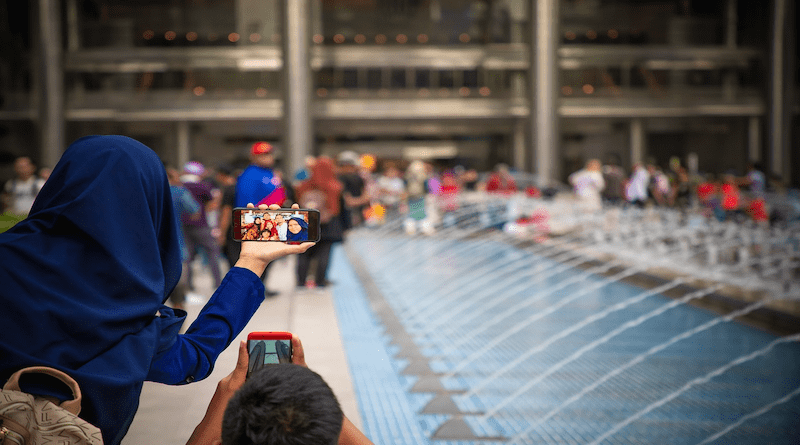Challenges For The Modern Day Tourist – OpEd
School holidays, long weekends, retirement, stag and bachelorette parties, honeymoons and babymoons are stimuli causing short term migration among humans. Visiting places is viewed as an opportunity to bond with family and friends, explore new environments, and challenge one’s sense of adventure. The desire is to reinvigorate the soul by relaxing or doing something not part of a regular day.
As a child, summer vacation meant visiting family in Goa. Growing older, vacations translated into visiting new places, but for shorter periods. Visiting monuments and museums filled the day. There was eating out, but it was not about finding the most vaunted place. Usually, decisions about food was based on practicality – budget, either proximity to hotel or monument, and hygiene. Yes, one did attempt to try out local dishes.
Flight or train tickets and hotel rooms were booked in advance not because of dynamic pricing but to ensure availability. Places to visit were based on knowledge, guidebooks or suggestions. However, today vacationing is a different ball game. Planning is many sided. After choosing a city comes booking flights and rooms, done much in advance to get cheap deals. After which the tourist-to-be scours the internet for sites to visit and the most fun ways to visit them. There is also the list of places to eat and dishes to order. Finally, there is the more practical decision on choice of clothes given that many opt to perform on the global social media stage.
Tourism per say is not a recent phenomenon. Since ancient times people have undertaken pilgrimages. These expeditions, besides giving brownie points to the devout, were a source of income to kingdoms in which these shrines were located. Romilla Thapar, the noted historian, writes ‘another source of local income was the large sums of money collected in pilgrim taxes by the administration in Somanatha.’ She also adds that local kings ‘attacked the pilgrims and looted them of their donations intended for the Somanatha temple.’ Prophet Muhammed and his followers undertook the first pilgrimage to Mecca in 628 CE. What we now know as the Stonehenge has been a site for celebrating the solstice for millennia.
Which brings us to the question – what is tourism about today?
The United Nations World Tourism Organisation refers to tourism as ‘the activity of visitors.’ The organisation explains tourism as ‘a social, cultural and economic phenomenon which entails the movement of people to countries or places outside their usual environment for personal or business/professional purposes. These people are called visitors…..’.
For many today, tourism is fuelled by the You Only Live Once (YOLO) philosophy mixed with the potent Fear of Missing Out (FOMO) insecurity. Though, social media is a good way to keep all and sundry updated, it also feeds into FOMO.
Enjoying an experience is personal. However, when today’s tourist is a replicator of aggregated experiences shared on social media, the personal is no longer what it used to be. These experiences become personal on account of the clothes worn and the verbiage that goes along with photos shared on the net. The personal experience is about the experience of living someone else’s dream.
The need to be different is tempered with choices that seem secure – what others have done and enjoyed. In some this does not satisfy the need to make a mark. Thus, one hears of callous tourist behaviour and how authorities there are taking action against them. City authorities have fined and jailed tourists. Others have advertising campaigns warning tourists or have passed laws making it difficult for tourists to repeat their predecessors actions. Other cities have signs that politely remind tourists to behave. This is also a consequence of tourists myopically believing that everyone in the city is also on holiday, and that a vacation is a holiday from good behaviour.
There was a time when memories of a vacation began on one’s return home. Then pot holiday conversations with friends revolved around the vacation. However today, there is a steady stream of updates going out to family and friends via social media. Hashtags and geolocations ensure that the information is available to others. On returning home vacationers have nothing more to say, instead they are accosted with questions on whether they were able to visit a well-known place or a supposedly little-known hidden gem. If they haven’t, they are met with a commiserative ‘next time’ suggesting the holiday was a bit of a waste. Often these questions are not based on personal experience but on information trawled off the net.
Weren’t holidays about doing less? Now, between walking tours, standing in line to enter restaurants and museums, joining pub crawls, taking the right selfies to post on social media and what have you, one is perpetually fighting the clock. The need to maximise a holiday entails tight schedules and frayed tempers. Not any different from a work day.
Social media is rife with nouveau inspiration – squeezing the most out of life, and living in a way to have no regrets at the end of one’s life. These I believe influence how many holiday. Therefore, it is no surprise that they desire a holiday to recuperate from a holiday.

